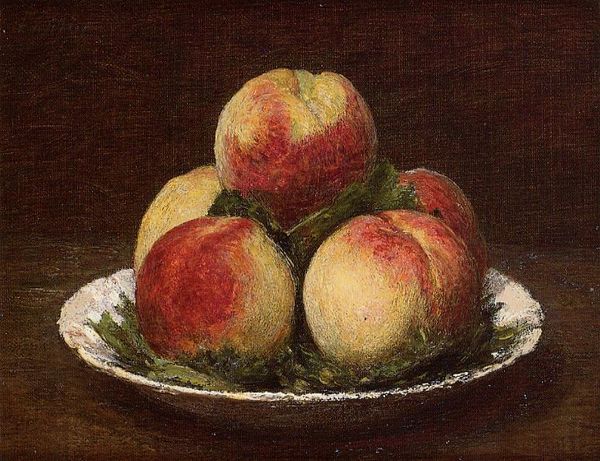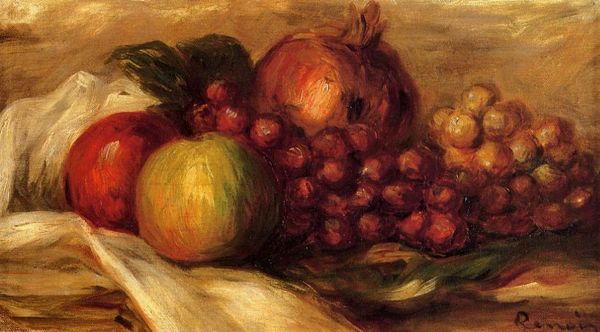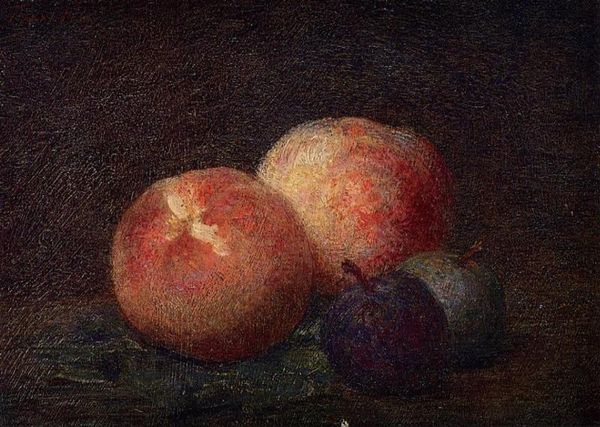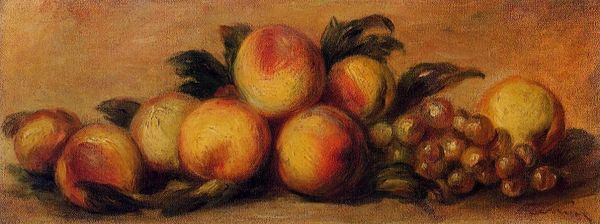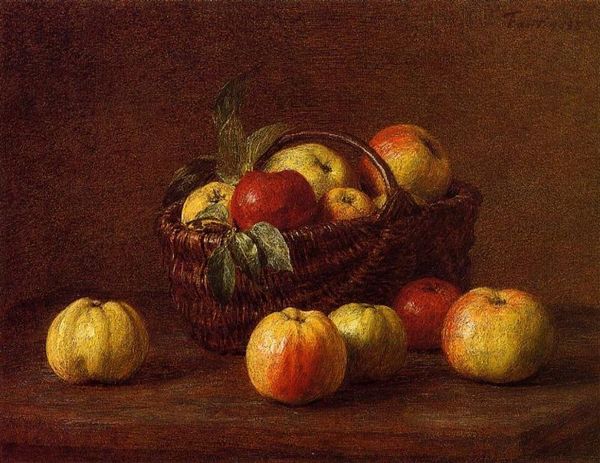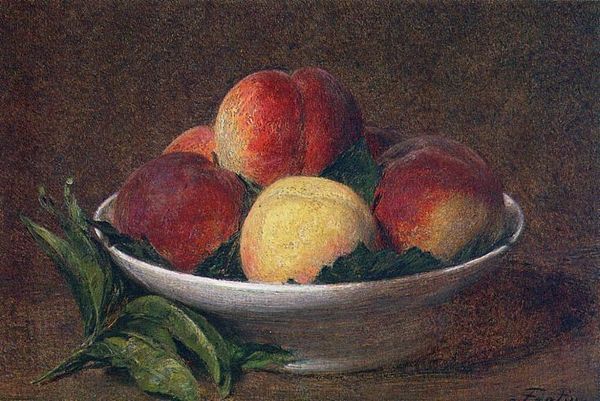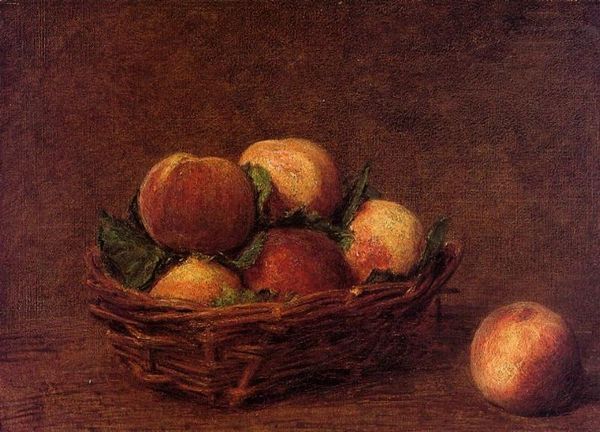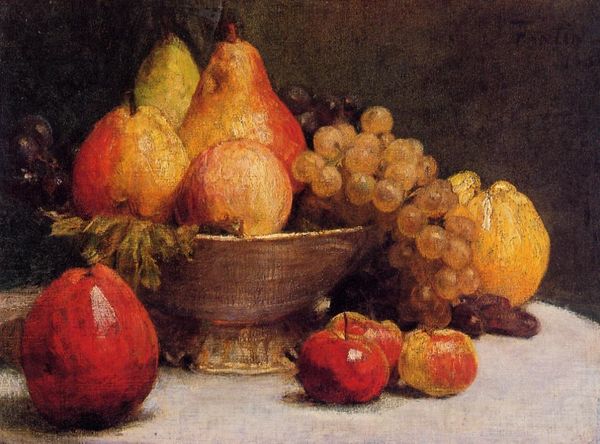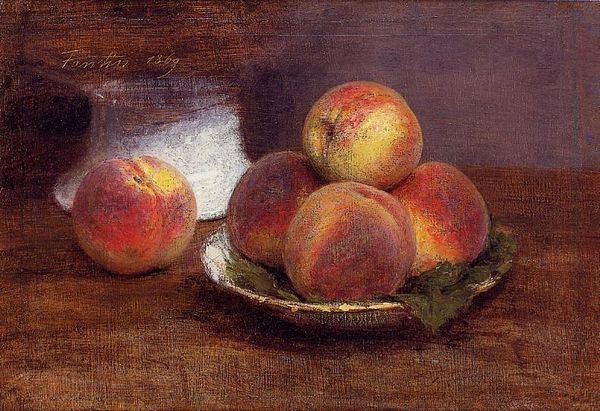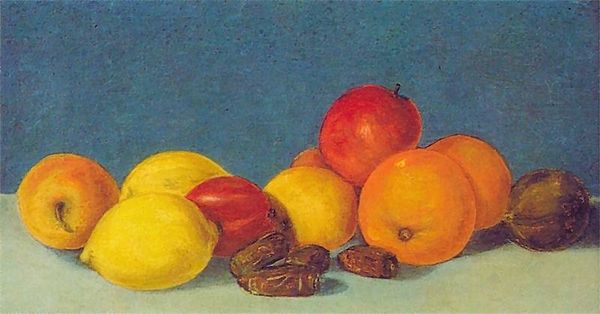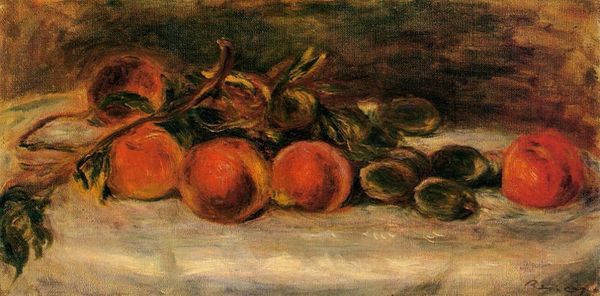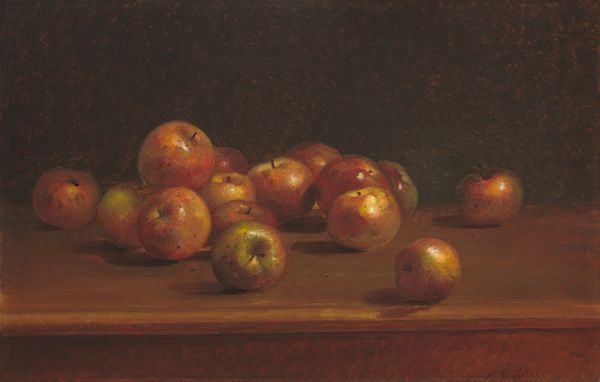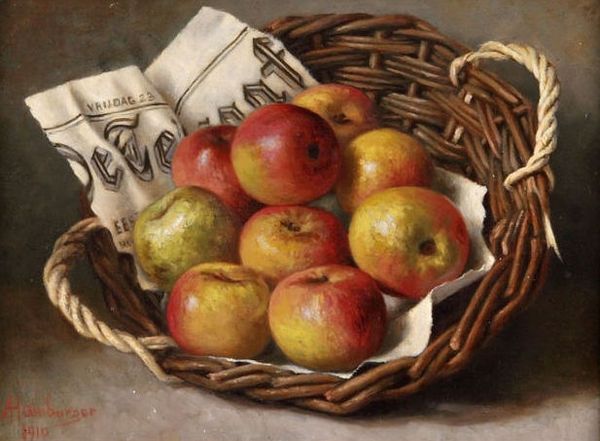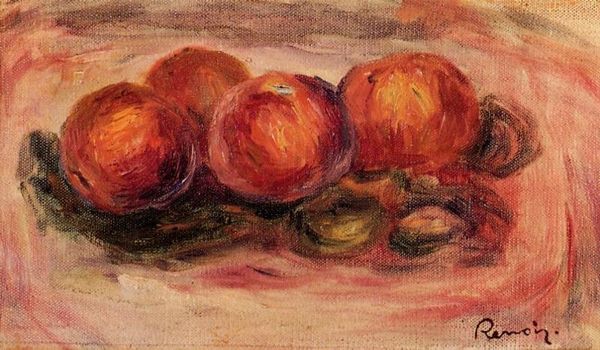
painting, plein-air, oil-paint
#
portrait
#
still-life
#
still-life-photography
#
painting
#
plein-air
#
oil-paint
#
oil painting
#
naturalistic tone
#
painting painterly
#
post-impressionism
#
realism
Copyright: Public domain
Editor: This is "Peaches and Grapes," an oil painting created in 1896 by Henri Fantin-Latour. It strikes me as a rather traditional still life, but the muted colors create a sense of intimacy. How would you interpret this work within its historical context? Curator: Certainly. Fantin-Latour was working in a period where the art world was rapidly changing, with Impressionism and other avant-garde movements gaining traction. However, "Peaches and Grapes," like many of his still lifes, deliberately rejects these trends. It embraces a more academic approach, echoing the Dutch Golden Age tradition of still life painting. Do you think his choice was purely aesthetic? Editor: Perhaps, but wasn't there also a societal expectation for artists to engage with contemporary life, particularly as the industrial revolution progressed? Choosing a seemingly mundane subject like fruit feels like a deliberate retreat from the political or social realities of the time. Curator: Precisely. This withdrawal can be interpreted as a subtle form of resistance. By focusing on the beauty and timelessness of natural forms, Fantin-Latour critiques the disruptive effects of industrialization and the increasing commodification of art. Still life, once a demonstration of wealth, became an assertion of enduring artistic values. Does that alter your initial sense of intimacy? Editor: It does. The painting feels less like a quiet scene and more like a statement. Knowing he deliberately turned away from the avant-garde, "Peaches and Grapes" reads like a defense of classical ideals within a changing art market. Curator: Exactly. Consider also the rising influence of art academies and salons. Artists like Fantin-Latour were navigating a complex system of patronage and public reception. His adherence to realism and traditional subject matter likely ensured a more favorable reception from established institutions. Editor: I hadn't considered the role of the art market so explicitly. It's interesting how a seemingly simple still life reveals these deeper cultural currents when viewed through that lens. Thanks, that was really insightful. Curator: Indeed. Examining art through a historical lens allows us to appreciate the choices artists make and the statements they convey within their specific social and political environments.
Comments
No comments
Be the first to comment and join the conversation on the ultimate creative platform.
